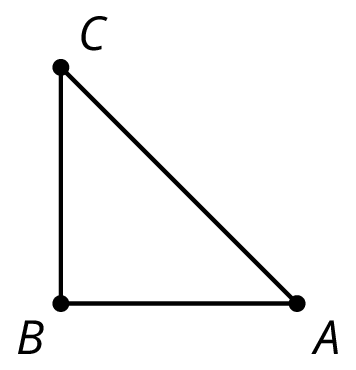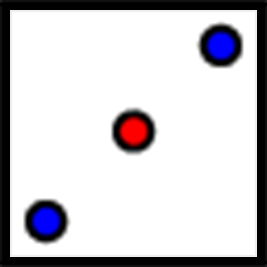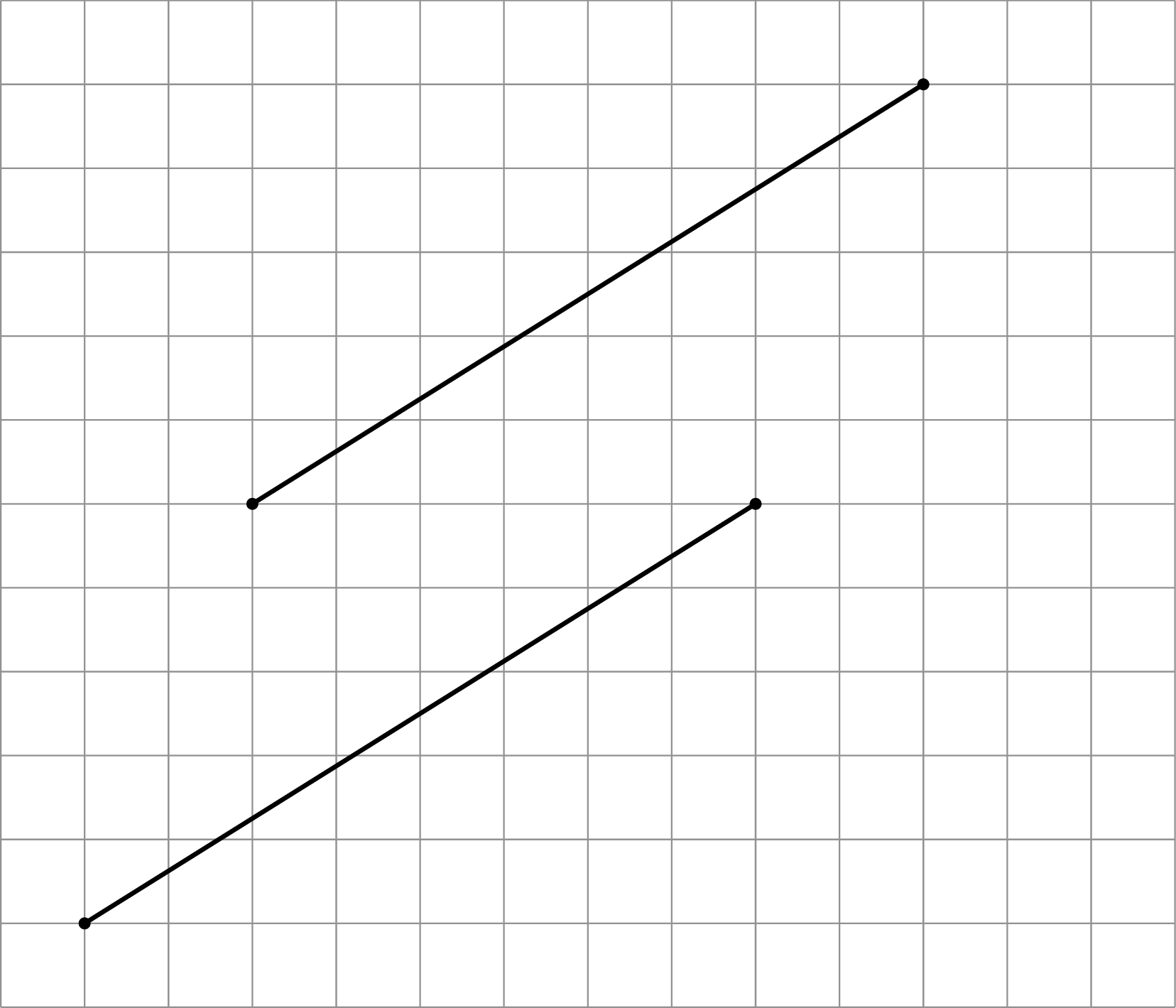8.1: Building a Quadrilateral
Here is a right isosceles triangle:

- Rotate triangle $ABC$ 90 degrees clockwise around $B$.
- Rotate triangle $ABC$ 180 degrees clockwise round $B$.
- Rotate triangle $ABC$ 270 degrees clockwise around $B$.
-
What would it look like when you rotate the four triangles 90 degrees clockwise around $B$? 180 degrees? 270 degrees clockwise?


